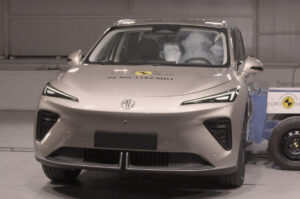Summary
- Deepdrive is testing in-wheel drive units and a patented dual-rotor motor to enhance EV efficiency.
- The company has raised approximately €50 million from investors, including Volkswagen and BMW, for further development.
A Munich engineering outfit called Deepdrive has started public testing of two ambitious electric-motor ideas — in-wheel drive units and a patented dual-rotor motor — and it says both could make EVs noticeably more efficient and space-friendly.
The company, formed in 2021 by seven ex-Formula Student engineers, is running prototypes on the Salzburgring circuit in Volvo and Tesla test cars and reckons its tech could make production EVs up to 20% more efficient. That bold claim is backed by serious interest and cash: Deepdrive has raised about €50 million (£43.5m) from investors including names such as Volkswagen and BMW, and the firm says customers are waiting as it scales toward “small series” production from around 2028.
Two routes, one goal
Deepdrive is pursuing two complementary approaches:
• In-wheel motors. Long touted and often rejected for road cars because of weight and complexity, in-wheel units promise excellent packaging (freeing up space inside the car), granular torque-vectoring and strong regenerative braking. Deepdrive says it has cut the traditional penalties enough to make in-wheel drive feasible and economical.
• Dual-rotor (twin-rotor) motor. Meant for a conventional central drive location, this patented design replaces two single-rotor motors with one compact unit that Deepdrive says is lighter, uses less copper, iron and magnets, and is therefore cheaper to build — while delivering comparable or better performance.
“Developing in-wheel motors was our original big idea,” says chief engineer and co-founder Alex Rosen. He adds that while other EV drive systems have improved, there’s still “a huge margin to work with” on efficiency compared with early EV losses.
Why it matters
Deepdrive’s pitch is practical: even modern EV drivetrains suffer loss from heat and mechanical transmission — the firm estimates early systems lost around 40% to these factors, and current mainstream setups are closer to 25%. Knock a chunk off that percentage and you either extend range, shrink battery size (and cost), or both. The packaging gains from in-wheel systems also make radically different — and more space-efficient — vehicle proportions possible.
Industry traction and testing
The twin-rotor design has already seen trials in BMW cars, and suppliers such as Continental are reportedly interested. Deepdrive says it’s validating performance and reliability on track before moving into pilot production runs.
Caveats and the road ahead
In-wheel motors have historically failed to reach mass production for good reasons — unsprung weight, exposure to shocks and complexity among them. Deepdrive acknowledges these problems but says its engineering advances have reduced them to acceptable levels. The company still has the difficult job of proving durability, cost competitiveness and serviceability at scale.
Bottom line
Deepdrive is an intriguing example of a small engineering team pushing at limits many larger manufacturers only tweak around. If the firm’s claims hold up through real-world testing and the move to small-series production, its tech could be another lever for cheaper, lighter and more efficient EVs — or at least give carmakers more layout and packaging choices. Either way, it’s one to watch as the industry hunts gains beyond just bigger batteries.






GIPHY App Key not set. Please check settings